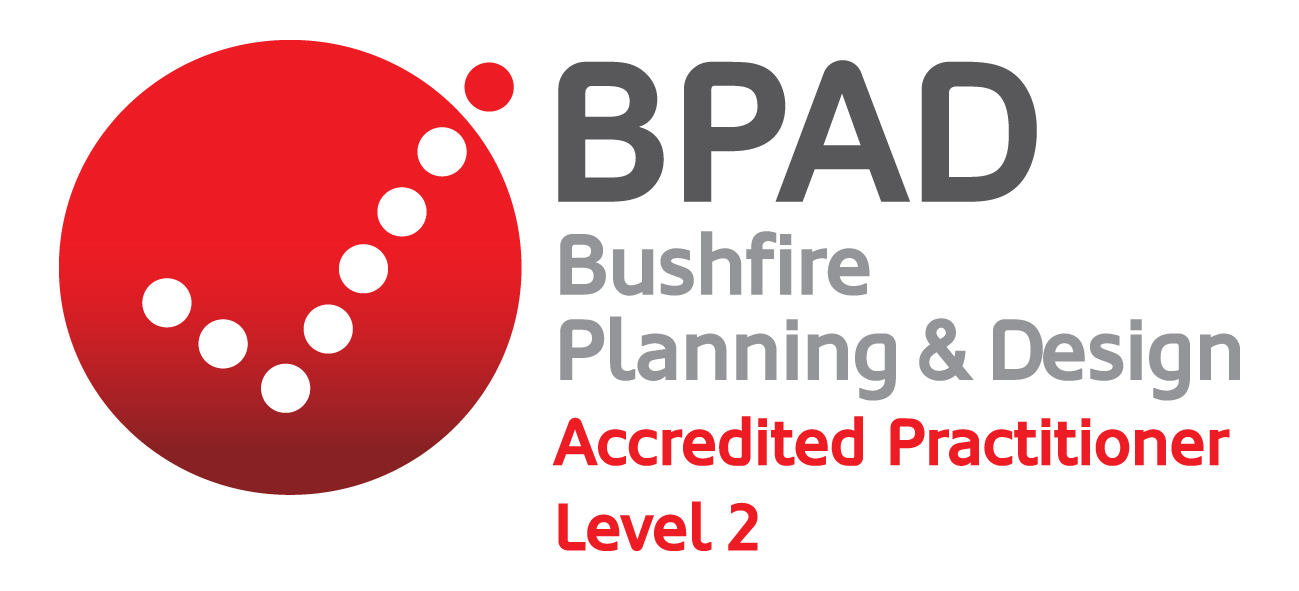To find out if your property is on bushfire-prone land (BFPL), you can use the online tool provided by the NSW Rural Fire Service (RFS) via the link below.
This tool allows you to check the bushfire prone status of your property, and also view the relevant bushfire-prone land map for your local council area.
Bushfire-prone land is land that has been identified by local council which can support a bush fire or is subject to bush fire
attack. These maps are prepared by local council and certified by the Commissioner of the NSW RFS. The NSW RFS has strengthened the rules
around how and where you can build your home so that you can still enjoy the landscape but keep you and your home safe.
At Firetech Bushfire Consulting, we specialise in helping property owners navigate the complexities of bushfire planning and design. If you find
that your property is on bushfire-prone land, we can provide a range of services to ensure that your project meets all necessary bushfire compliance
requirements. From preliminary bushfire assessments to bushfire compliance certificates and bushfire attack level (BAL) certificates, we have
the expertise to help you build with confidence.
A Bush Fire Attack Level (BAL) is a rating that is used to assess the potential severity of a bushfire
and the level of radiant heat that may affect your property. Your BAL is determined by factors such as the
vegetation type, distance from your property to vegetation, slope, and the area you live in. As part of the
development application process, you will need to confirm your BAL in a written report.
There are six bush fire attack levels ranging from BAL-Low, which is the lowest risk, to Flame Zone, which is the highest risk.
Here’s what each of the six BAL ratings means:
BAL-Low: Lowest risk from a potential fire.
BAL-12.5: Risk is primarily from potential embers during a fire.
BAL-19: Moderate risk, particularly from embers and burning debris.
BAL-29: High risk, particularly from embers, debris and heat.
BAL-40: Very high risk. Likely to be impacted by embers,
debris, heat, and potentially flames.
BAL-FZ: Extreme risk. Directly exposed to the flames of a
potential fire front.
It’s important to note that each BAL rating has specific construction requirements that need to be met to ensure that your property is
adequately protected in the event of a bushfire. We recommend consulting with an accredited Bush Fire Consultant to determine your
BAL rating and ensure that you meet all the necessary construction requirements.
If you are intending to submit a DA (Development Application) through council you will need a Bushfire Assessment Report.
If your project is a complying development (CDC) under State Environmental Planning Policy (Exempt & Complying Development Codes) 2008, then you will need a BAL Certificate.
The cost of a Bushfire Assessment Report or a BAL Certificate can vary depending on the site and the nature of the development.
Our current pricing for a standard report for residential development:
- A Bushfire Assessment Report for a DA starts from $1800 +GST.
- A BAL Certificate for a complying development starts from $1600 +GST
This stands for Asset Protection Zone and is a fuel reduced area around a building or structure. An APZ provides a buffer zone between the bushfire hazard and buildings.
A well maintained APZ will reduce the risk of direct flame contact to the building, damage from radiant heat and ember attack. The size of your APZ is based on:
the vegetation type, slope, and the nature of the development. An APZ can include a driveway or parking area, paved areas, managed lawns and gardens.
Refer to the NSW RFS document for further information: rfs.nsw.gov.au/resources/publications/building-in-a-bush-fire-area
An adequate water supply is essential for firefighting purposes. If your property doesn’t have access to reticulated water (ie hydrant in street), a Static Water Source (SWS) is required.
A SWS normally needs to be a non-combustible (metal or concrete) tank. The size of the tank required is dependent on the lot size (≤10,000m2 = min. 10,000L; >10,000m2 = min. 20,000L).
In NSW, if your property has a reticulated water supply, all portions of the development need to be within 70m of a hydrant, otherwise a SWS may be required.

